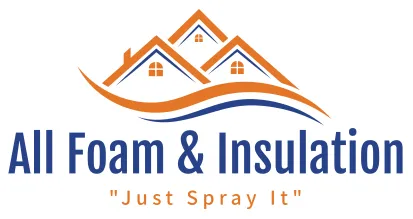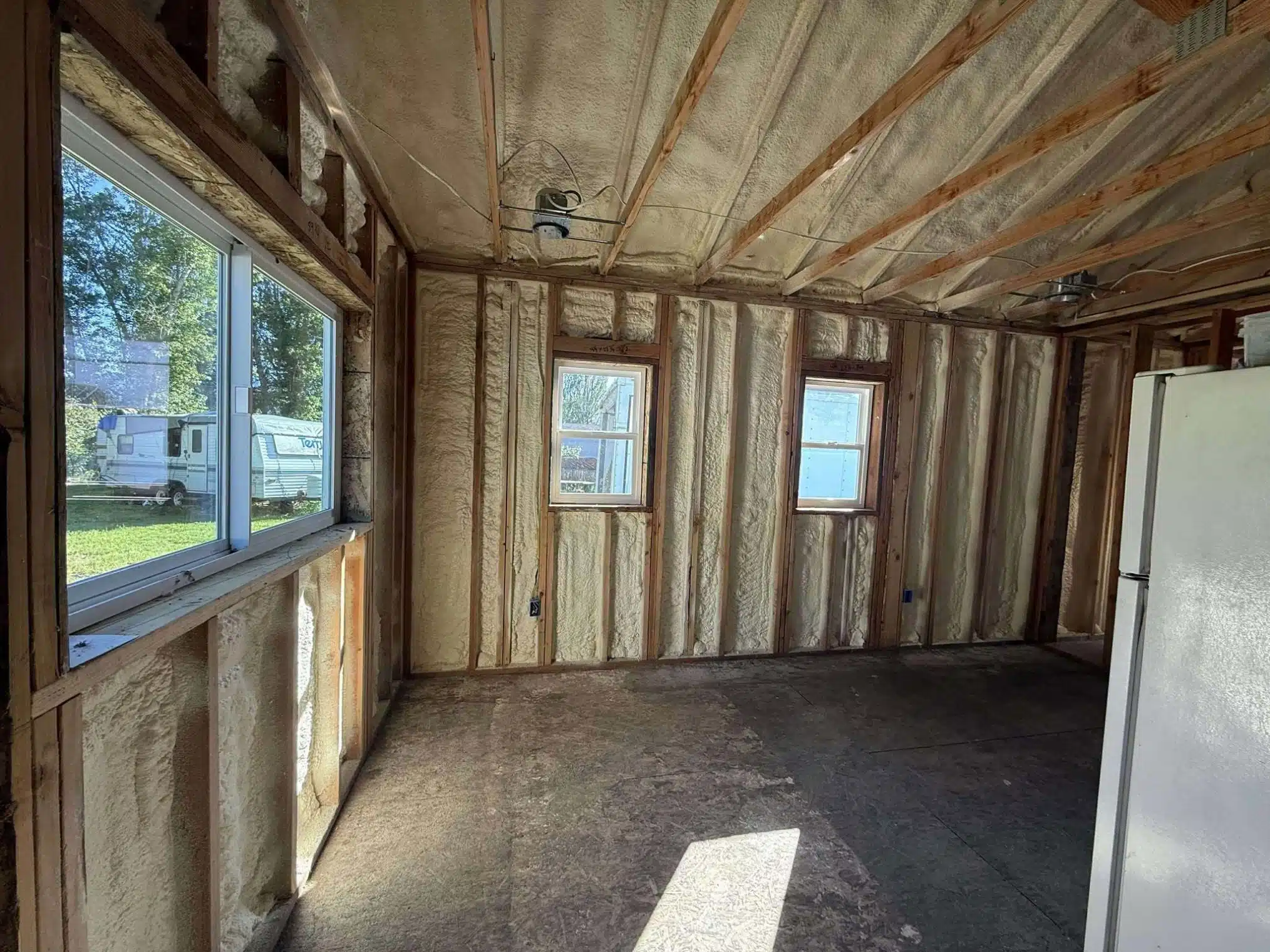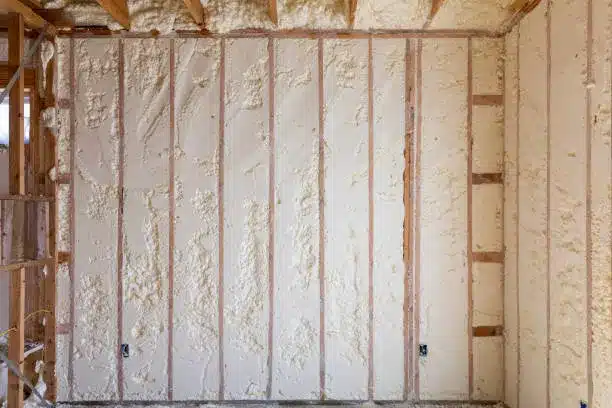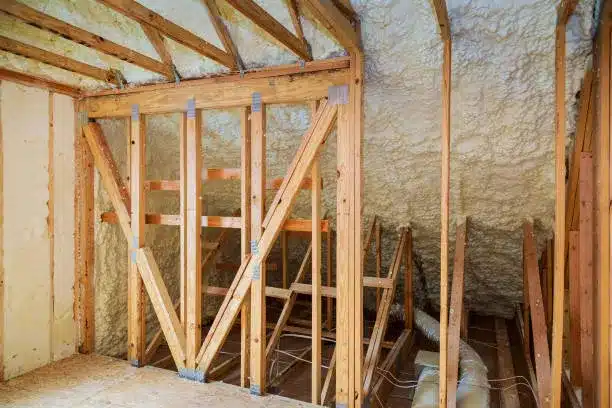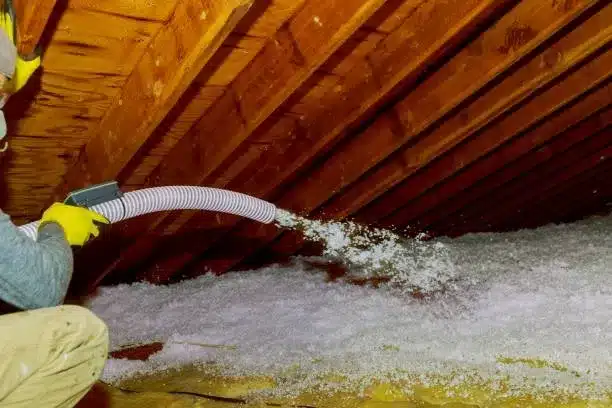Professional insulation stops mold and mildew by keeping indoor humidity in check and blocking condensation on surfaces. Mold thrives in damp spots with temperatures between 40 and 100 degrees Fahrenheit, so insulation maintains steady warmth or coolness to disrupt those conditions. Homeowners often face repair bills from unchecked growth, but proper installation seals gaps and adds vapor barriers that trap moisture before it spreads.
In this article, we’ll break down the mechanics, share real-world examples, and offer steps to assess risks. You’ll gain tools to spot issues early and choose effective strategies. Information draws from hands-on work with insulation in various climates, including the damp Pacific Northwest where moisture challenges demand targeted approaches.
How Mold and Mildew Form in Homes
Mold spores float everywhere, but they only grow when moisture lingers. Water from leaks, high humidity, or poor ventilation creates breeding grounds. In attics and walls, temperature swings cause condensation, turning surfaces into wet zones. A report from the EPA explains that relative humidity above 60 percent speeds up growth, leading to health risks like allergies and structural damage.
Basements often suffer most. Cool concrete pulls in humid air, forming dew points where mold settles. Crawl spaces under homes trap earth moisture, raising levels inside. Practical experience shows that untreated areas in rainy regions like Oregon see black mold patches within months of minor floods.
Insulation’s Direct Impact on Moisture
Insulation materials like fiberglass, cellulose, and spray foam each handle moisture differently. Fiberglass resists water but needs vapor barriers to prevent absorption. Cellulose, treated with borates, naturally repels mold. Spray foam expands to seal cracks, creating an airtight layer that stops humid air from reaching cold surfaces.
In cold weather, uninsulated walls drop below dew point, causing indoor moisture to condense. Insulation raises surface temperatures, drying out potential spots. During summer, it blocks hot, humid air from infiltrating, maintaining dry interiors. Data from Energy Star indicates that adding R-30 attic insulation cuts moisture buildup by up to 50 percent in many homes.
Bonus Tip: Check for air leaks around windows before insulating. Sealing them first boosts effectiveness and avoids trapped humidity.
Types of Insulation and Their Moisture Resistance
Different materials suit various home setups. Below is a table comparing common types based on moisture control and mold prevention.
| Insulation Type | R-Value per Inch | Moisture Resistance | Mold Prevention Features |
|---|---|---|---|
| Fiberglass | 2.9-4.3 | Moderate; needs vapor barrier | Non-organic, resists mold if dry |
| Cellulose | 3.1-3.8 | High; absorbs but releases moisture | Borate treatment kills mold spores |
| Spray Foam (Closed-Cell) | 6.0-7.0 | Excellent; waterproof | Dense structure blocks water vapor |
| Mineral Wool | 3.0-4.0 | Good; hydrophobic | Inorganic fibers deter growth |
This table highlights why closed-cell spray foam works best in high-humidity areas. Market facts show that mold remediation costs average $2,200 per incident in the U.S., per HomeAdvisor. Proper insulation reduces these risks significantly.
In the Pacific Northwest, where annual rainfall exceeds 40 inches, cellulose with barriers handles persistent dampness well. Homes there benefit from combining insulation with ventilation to manage fog and rain effects.
Costs Tied to Mold Growth and Prevention
Ignoring moisture leads to expensive fixes. Drywall replacement, wood rot repairs, and HVAC cleaning add up fast. A study by the Insurance Information Institute notes that water damage claims, often from mold sources, hit $12.5 billion yearly in the U.S. Insulation upfront saves money long-term by averting these issues.
Energy bills drop too. Better insulation keeps homes comfortable without overworking systems that stir up dust and spores. For instance, one practical insight from field work: A family in a wet climate cut heating costs by 20 percent after insulating walls, and no mold appeared in follow-up checks.
Bonus Tip: Inspect attics yearly for condensation signs like frost on rafters. Early action prevents widespread problems.
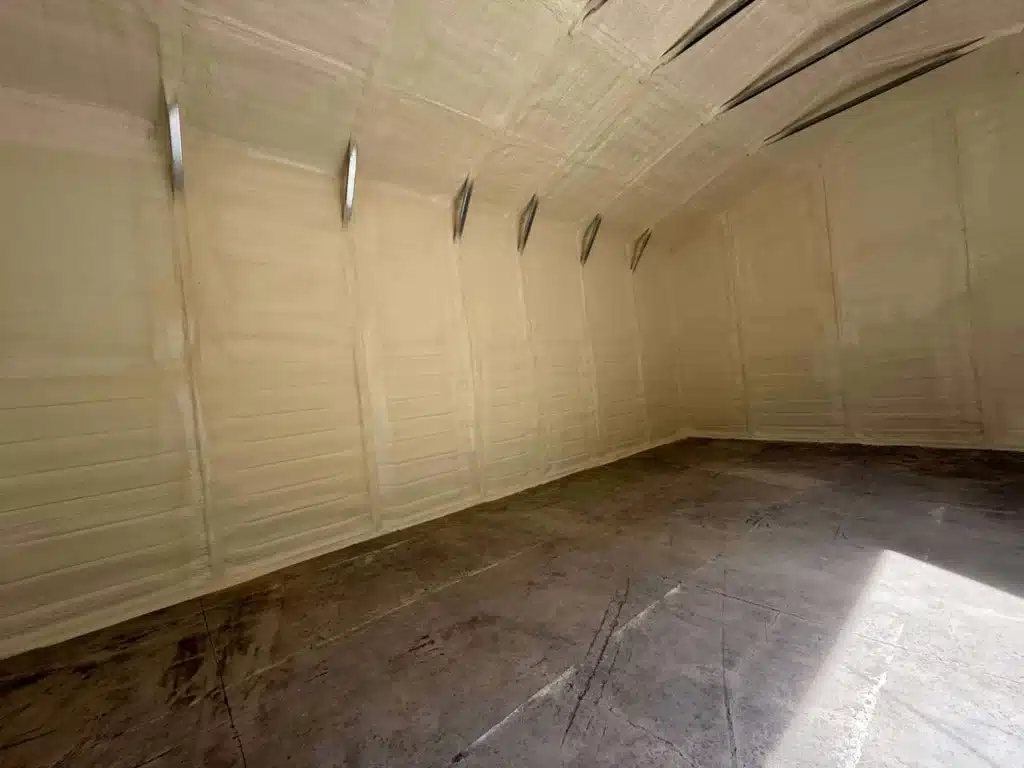
Things to Consider Before Making a Decision
Assess home age and construction first. Older houses with settling foundations may hide leaks that insulation alone can’t fix. Measure current humidity with a simple meter; levels over 50 percent signal urgent needs.
Think about local climate. In dry deserts, focus shifts to summer cooling, but in humid zones like coastal areas, prioritize vapor control. Budget for professional assessment to spot hidden issues, and review material warranties for moisture coverage.
Weigh energy audits. They reveal where heat escapes and moisture enters, guiding targeted insulation. Consider future plans too, like additions that could alter airflow.
Bonus Tip: Pair insulation with dehumidifiers in basements for double protection against summer spikes.
Common Questions
Can I Install Spray Foam Insulation Myself?
Homeowners often wonder about DIY options. Basic kits work for small gaps, but full walls demand pros to ensure even coverage and avoid compression that traps air. Another query involves signs of existing mold: Musty smells or discolored spots warrant tests before insulating over them.
Are There Eco-Friendly Insulation Options?
Many ask about eco-friendly choices. Recycled cellulose fits, reducing landfill waste while fighting mold. Ventilation ties in frequently; fans and vents complement insulation by exhausting humid air.
Key Takeaways
Professional insulation curbs mold by regulating temperature and blocking moisture paths. Tables and data underscore its role in cutting costs and health risks. Evaluate your home’s humidity, climate, and structure to decide on next steps. Match choices to specific needs and long-term plans for lasting protection.
Next Steps for Home Protection
Contact All Foam & Insulation, LLC at (541) 826-9600 or [email protected] to discuss assessment options. Professionals evaluate unique setups and recommend fits without pressure. Take time to review needs and gather quotes. This approach ensures decisions align with goals, avoiding rushed choices that overlook details.
Frequently Asked Questions
Can Insulation Alone Stop All Mold?
No, it controls moisture but pairs best with ventilation and leak fixes. Combined efforts drop risks below 10 percent in most cases.
How Long Does Professional Insulation Last?
Quality installs endure 20-50 years, depending on material. Regular checks extend life by addressing wear early.
Does Insulation Increase Home Value?
Yes, energy-efficient features appeal to buyers. Appraisals often add 5-10 percent for solid moisture barriers.
What If My Home Has Existing Mold?
Remove it first through cleaning or pros. Insulating contaminated areas spreads spores, worsening issues.
Is Spray Foam Safe for Allergies?
Closed-cell types emit few vapors once cured. They block allergens better than loose fills.
Sources
- EPA – Government resource on mold causes, health effects, and prevention basics.
- Energy Star – Guide from the U.S. Department of Energy on insulation benefits, including moisture control data.
- HomeAdvisor – Consumer reports on average mold remediation costs across the U.S.
- Insurance Information Institute – Analysis of insurance claims related to water damage and mold growth.

